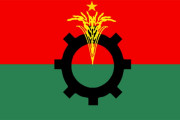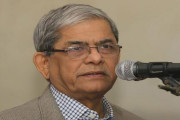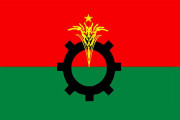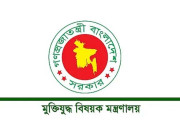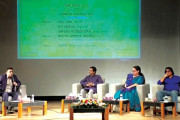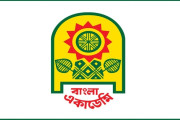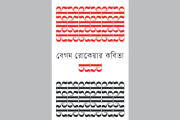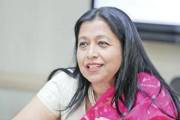Indian High Commissioner Vikram Doraiswami has said Bangladesh is one of India’s closest friends and neighbours. The two countries have regular consultations to further these ties. It is a quiet process, not always publicised. He said, there is democracy in both counties and people have their own views. That doesn’t mean that’s the governments’ stand.
The Indian High Commissioner made these observations during an interview with Ayesha Kabir on 21 November. During the interview at the high commissioner’s office in Dhaka, he spoke of relations between the two countries and issues of regional and global significance. The interview appears today, covering issues pertaining to the recent spate of communal violence during Durga Puja, the failure to sign the Teesta deal, unresolved demarcation of the Feni river, delays in LoC projects and more.
Ayesha Kabir: We saw some communal violence in several districts of Bangladesh during Durga Puja. Subsequently, BJP and some religious groups created tensions in West Bengal. Over the last two decades we unfortunately saw a recurrence of such incidents. What are your observations on this recent spate of unfortunate incidents?
Vikram Doraiswami: The position of the government of India was very clear as articulated during the time of the incidents. The incidents were unfortunate, but we also noted that the Bangladesh government was doing all it could do to bring the situation under control and to ensure that the Durga Puja festivities continue, which did continue. The government reacted by deploying police heavily and made arrests of those involved in the violence. We were conscious of that and were careful to acknowledge that.
We should be clear that what the government of India says formally is the government of India’s view. There is, of course, democracy in both counties and there will be other people who have their own views. That doesn’t mean that’s the governments’ stand.
Ayesha Kabir: Did you discuss with Bangladesh the issues of communal violence that took place during Durga Puja?
Vikram Doraiswami: Bangladesh is a sovereign independent country. It is one of our closest friends and, physically speaking, one of our closest neighbours. So obviously we have close consultations about issues of mutual concern like communal violence, but we don’t publicise this. We are not here to tell Bangladesh what to do. It is your country and looking after your people is your business, just as looking after our people is our business. What we do, is to share information. We have a good number of friends out here so we are able to at least pass on information so that we can keep each other well briefed about what’s going on. That is really a process of quiet consultation and sharing of information to ensure that on both sides we can do whatever can be done to maintain a positive trajectory.
Ayesha Kabir: There have been repercussions in other parts of India, apart from West Bengal, about the recent incidents of communal violence in Bangladesh. How can this be addressed?
Vikram Doraiswami: That is exactly why we consult with each other. We have to try figure out how best to ensure that fake news doesn’t take over. More often than not, incidents are charged up by fake news. There was a lot of fake news about things happening in Tripura. It turned out that it was not true. Because the government in Tripura was quick in giving out information, was able to share information with us, we were able to pass it on to thought leaders, not just the government, but to civil society and others so that people could reassure other people that such incidents did not actually happen. Of course, since we are sovereign countries, looking after our own citizens is our own respective business. But obviously we have to try and see that there are people who want to try and whip up sentiments. So we do our best to try and share information. And we do that as pro-actively as possible so that no innocent people or ordinary people have to suffer because of the actions of a few provocateurs.
Ayesha Kabir: The process of the National Register of Citizenship, NRC, is an internal affair of India, but being a neighbouring country, Bangladesh has concern over it. How much will these issues affect the present ties between the two countries?
Vikram Doraiswami: We recognise where the concern is coming from in Bangladesh, but it is important to note that this is not a unique process. It is part of a 1950s initiative to create a National Register of Citizens. So this is not something that is uniquely created by the current government in Assam or the current government in Delhi.
In the seventies, as part of the larger challenges of sociopolitical integration in Assam, there was an Assam agitation which you will be familiar about. It was an agitation against all “foreigners”, in other words, people from outside the state, including Indian citizens from outside the state. That had a very long and violent history and eventually the settlement included the idea of identifying who could originally show their ancestry in Assam. And this was a court-led process. And it is a complex exercise and has actually been quite heavily misunderstood. They effort wasn’t to try and identify, bluntly speaking, Bangladeshis.
So in that process what is finally done with the data that is collected is a different matter. The question of what sort of citizenship would apply has to be decided and that was a critical decision which had to be done by the legislature in consonance with laws and the directions of the judiciary. That means it’s not going to impact on Bangladesh. Whatever will be done will be done within the four corners of Indian law, Indian citizenship law and court rules. It will have its own set of complexities, but these are domestic political issues that we will have to deal with.
Ayesha Kabir: In April 2017 in Delhi, Indian Prime Minister Narendra Modi assured Prime Minister Sheikh Hasina that the Teesta agreement would be signed during their tenure. It hasn’t happened. There is a kind of despair among the people of Bangladesh, they feel that India is gradually withdrawing from the Teesta agreement. Is it unlikely for the Teesta agreement to be signed any time soon?
Vikram Doraiswami: It is not only Bangladesh, India too would like to sign it. There was a bipartisan consensus in Delhi between the Indian government and the opposition level to move this forward. However, just as friends in Bangladesh say you have to understand Bangladesh, I want to say you too must understand India. We have a certain constitutional structure that we can’t unilaterally change.
Under that constitutional structure, powers are separated between states and the union. Some of our most complex river issues are actually between states. Where I am from in southern India, the oldest river water dispute probably in the subcontinent is over the Kavery River. And it’s been court various times since the British period. It is not that we have no desire to solve it, but we have to do it in a way that we bring all stake holders on board. That process, unfortunately, is a political process. That has to be addressed. So folks in Bangladesh must have to understand it is not out of a lack of will to do this. We also have our political system to deal with. This, however, does not stop us from moving ahead on other river water issues. After all, we have 52 other shared rivers. We do need to speed up on improving the way in which we manage our rivers together.
Ayesha Kabir: Despite the historic signing of LBA protocol in 2015, the issue of border demarcation of the Feni river is yet to be settled. Since the official failed to narrow down the gap, it was earlier decided to resolve the issue from the political high-ups. What is the latest development of the issue?
Vikram Doraiswami: We have been in discussions for the last one year to try and find a way forward regarding the demarcated 1.6km of space of Feni River. Both sides have broadly agreed that it must follow the principles of demarcation and the Land Border Agreement. The question is, which time do we look at the river? The water has been looked at and the river areas has been demarcated and examined jointly at various points of time. But the river course has changed since then. So the question is, which river course are we talking about? It has practical implications on land usage. The Covid period has delayed things. We were hoping to speed things up and come to an agreed package, but that has been delayed. The political side has told us, you find a solution that doesn’t create further problems. So it is now up to the ingenuity of the surveyors and the civil services of both sides to try and work it out. I don’t think it is impossible. I have been there twice myself and have looked at the maps. It is a solvable thing. We just have to find a way of doing it within the broad LBA package.
Ayesha Kabir: The Indian authority repeatedly pledges of not using lethal weapon in the Indo-Bangla border. However, the killing of unarmed Bangladeshis is still happening along the border. Why hasn’t it been possible to have zero-killing along the border?
Vikram Doraiswami: Thank you for asking me exactly that question. First of all, it is not unarmed people who are being killed. We need to make a clear distinction. Let’s understand what’s going on, on the boundary. It’s a 4,096km boundary of which, in the smaller segments is the four states Assam, parts of Tripura and Meghalaya and Mizoram. In Assam there is not much of a land border, there the river border. Tripura has a long border with Bangladesh. West Bengal has the longest border. So, much of the pressure is on the Bengal borders. This underlies the closeness of the socioeconomic conditions there. There is a lot of pressure on the border all the time, on both sides. This is not a complaint about any one side. People are people. They are looking for economic opportunities. These are in areas on both sides where there is largest challenge for gainful employment.
Every day there is some incident happening on the border. There are multiple incidents of firing in the air and this is all between 10pm and 5am. The question is, who is involved in all these incidents? Let’s identify that. One, it is both Indians and Bangladeshis. Therefore this is not illegal immigration. Two, it is all groups of young men, 999 per cent almost, between the age of 18 and 30-35. It is all connected with illegal economic activities, largely cattle smuggling. If it was small stuff like yaba tablets and all that, those could just be thrown across. You don’t need large numbers of people.
Deeply regrettable and tragic as any incidents leading to loss of life are, these should not be confused with the illegal movement of unarmed ordinary people across the border. In the case of ordinary people apprehended for crossing the border illegally–both by accident and by design–the consistent effort of border guards on either side is to return these people to their country, provided it can be proven that they are indeed from that country. In case they cannot be returned because their details cannot be established, they are then handed over to the local police for registering legal cases. Here are some official statistics: between January and October 2021, 460 Bangladesh nationals were handed over to the BGB, and 124 Bangladeshi nationals were permitted to return without processing as they had inadvertently transgressed the border. This clearly shows that illegal crossing is not being handled with violence.
Now, continuing further, let’s examine what happens in other cases of illegal economic activity that leads to violence. Our side has fairly heavy deployment along the border and regular patrolling. So patrolling happens through the night in groups of four people. Only one of the BSF guys carries a lethal fire weapon as per our arrangement to try and dampen down violence on the border. The others carry non-lethal weapons, pellet guns, etc. But one firearm is allowed as self-protection.
Now this is the scenario that we face: when there is pressure on the border, it is clearly coordinated. We have a group coming from the Indian side, a group of people coming from the Bangladesh side. They essentially cut the border fences and they try and push across cattle. That’s the only reason you need to cut a border fence. If it’s very large fencing, double fencing on both sides, they can’t cut the fences fast enough. Then they use cantilevers, big logs which literally lift the cattle over the fencing. When the border force on the Indian side stops them, they resort to violent attacks to seize back the properties or cattle. They know that together, the Indian and Bangladeshi youth involved in these activities outnumber the BSF. The attackers are carrying dahs, lathis, sharp weapons. Such attacks are life threatening.
And they typically know that only one BSF trooper is carrying a firearm and they go for him first. I have seen videos of this because we now have extensive night vision cameras and so on deployed on the border. Not all happen in filmable conditions, but there are a fair number of videos now. You can actually see groups of them coming and it’s from both sides. Remember, this is in pitch dark conditions. You can’t tell who is Indian and who is Bangladeshi. After all, we obviously all look the same. If you put yourself in the BSF guy’s shoes, he sees 15 guys rushing at him, and they all have something in their hands; what do you expect him to do? In every one of these incidents, one or two BSF guys sustain deep cut wounds, some have lost an arm, some have lost a hand, but not all incidents lead to casualties among the attackers. It is not as if anyone would want to shoot people first.
Here are some numbers that will substantiate the point: 2010 to 2019 (both years included): Bangladesh citizens killed in BSF firing on the Indian side of the border: 124.
Indians killed in these incidents on the Indian side border: 90.
Number of BSF personnel killed in these violent incidents in the same time: 17.
Number of BSF personnel injured in attacks with sharp edged weapons: 1039.
As I have said in the past, the numbers clearly show that: (a) Casualties in such incidents are from both India and Bangladesh, in more or less equal numbers; (b) BSF patrols are sustaining serious injuries at a very high rate, which is consistent with the notion that they are responding in self-defence; and (c) the numbers of deaths–Indian and Bangladeshi–are far less than the number of people involved in illegal crossings, showing therefore that such casualties are almost entirely from among those people who are involved in violence, on our side of the border.
What does all of this mean? In short, it means that the victims of this tragic violence on our side of the border are NOT illegal immigrants. That is a separate process. Illegal movement of people for jobs, as the papers correctly put it, is happening both ways. The protocol is quite humane there. There is no violence against those people. But this violence and the deaths are an altogether different thing. These are not illegal immigrants. They are not doing this to go to India or to Bangladesh. They are doing this for an economic purpose.
While I am sympathetic to the fact that the people in communities on both sides of the border are poor and they need to find a means of making a living, there is no excuse for violence. And you can’t call them “cattle traders”. There is no legal cattle trade between India and Bangladesh. Cattle trade may be legal within Bangladesh but it is not legal across our border. And those doing this know it otherwise they wouldn’t be there are three in the morning! If they were legitimate cattle traders and trade, they would be there during the day. This is the point that people have to understand. These people have to be stopped. Criminal activity has to be restricted.
To do this, most of all, there must be more economic opportunities provided on both sides. We need to work together to encourage more legal trade to happen. People can be engaged in a good way across the border and there is every reason to do it. After all, people have cultural and social ties that have persisted these past 75 years across the border. There is no reason why we shouldn’t celebrate it and use it to support us, rather than to make things difficult.
Put it another way, why would we seek to alienate public opinion in a country that is so important to us? It just doesn’t make sense.
People are poor. They want to make money. This is quick money. The cattle in India don’t come with much value, but when it is sold here there is value. It is true that your meat industry is doing much better. You don’t need it so much, but if you are getting something for practically nothing and you can sell it at a good price, then everybody makes money.
Ayesha Kabir: Bangladesh is the highest recipient of the Indian Line of Credit-LoC. However, both the countries acknowledged the delay of projects under LoC agreed to expedite the process of implementation. What is the latest status of implementation?
Vikram Doraiswami: This is something we both want to move forward with. We have about 7.8 billion dollars in LoCs extended to Bangladesh. That 7.8 billion dollars is approximately 28 per cent of our global extension of LoCs. It is also extended at terms that are far better than what we offer to most of the rest of the world. It is offered at 1 per cent flat. Hardly anybody offers better rates than that. And the difference between the market cost of borrowing the money and the actual cost at which we are lending the money, is borne by the government. So obviously we are also interested in speeding it up because we are paying for the cost of capital otherwise, without actual projects coming.
Admittedly this is a new process for both the governments and it is taking some time for the systems to evolve. And we have to understand that so that we can figure out how best to cooperate and bring the LoCs forward. We have now come to understand on both sides where the major challenges are. A number of LoC projects, for instance, procurement projects, move faster. Procurement is comparatively simpler once you identify what you want to buy, have specifications of what you want to buy, say buses or construction equipment. Then it’s a simple matter of tendering and ensuring that price discovery is done in a way that’s good.
Here is another point of interest. We work actively on the price discovery part because we don’t say that you can only buy from this Indian company or that Indian company. We work to ensure that you get the best possible price. So we have been able to ensure in a large number of cases under the Line of Credit projects, that the price that is contracted is below the estimated price. So we have actually saved money for the government and Bangladesh and for ourselves. That ought to be a good thing for the tax payer in Bangladesh.
Out of 43 projects, of about 6.9 billion dollars, 14 have been completed, 18 are in implementation stage and 11 are at the DPP stage. If I put that in monetary terms, 72 per cent of the projects are at planning or DPP stages and at tendering stages. Which means approximately about 4 million dollars’ worth is at DPP stages. Now these are internal to the government of Bangladesh. We cannot dictate how the DPP is. In some projects the DPPs are over three years old or four years old. So when the DPPs are finalised, the costs are already different. Over the last one year we have made great progress because we have been able to identify the gaps.
We had to spend approximately 700 million dollars over all the years till last year. This year alone we spent over another 120 million dollars. So we are hopeful that by next year, given how much is now at the final stages tendering and project implementation stages, we will cross the billion dollar mark within the first half of next year. We think this would put us on a fast track to speed up the rest also. We do need to work faster to forward a number of LoC projects and to ensure that the processing is done faster, the process of bringing the project from conceptualisation to draft project stage, then to actual tendering, is speeded up. We already agreed that when it comes to the actual tendering stage, it will parallel track. We will help parallel track, EXIM Bank will parallel track what happens at the tender stage, the signing of an agreement, the preparing of a draft and the terms of the agreement. Those can be parallel tracked. You don’t have to do them sequentially. That is how the Japanese do it. We are copying the Japanese model.
What we would also suggest is that payment processes be speeded up because in the case of some of your other partners, payment is made, disbursement is made to the project agency faster. Slow payments means slow work. The company needs the money to keep the cash flow. All we are saying is, if you can cut that loop short, and if DPPs can be speeded up, that would be a useful thing. We have learnt a lot along the way. Until the DPP is prepared, you can’t say the project is finalised. That creates a lot of trouble.
DPPs were for projects that were complex or difficult to design, for instance, the Khulna-Mongla railway. That DPP has been revised so many times that your own government correctly said that, if the DPP has to be revised so many times, then there is something wrong with the DPP.
Ayesha Kabir: There were series of discussions between the two countries and India asked for transit repeatedly. In recent times we don’t hear that much about transit. Has India lost its interest in transit through Bangladesh?
Vikram Doraiswami: I am not sure where you get this notion from. We are consistently interested in connectivity for better two-way trade with Bangladesh and for connectivity through Bangladesh. There are three points to make here. First, the high cost of logistics and the regulations that effectively give monopoly status to one border crossing are the largest non-tariff barrier to trade on both sides, increasing the cost of goods coming to Bangladesh and the cost of your goods in the Indian market. Without opening up more land ports to unrestricted trade, and without improving rail, road and riverine connectivity and infrastructure, and without building and staffing new customs facilities, new warehouses and ICDs, our two way trade and investment flows will always be limited.
Second, we are already providing Bangladesh transit by rail to Nepal, and we are providing, at zero extra cost, facilitation for goods trade between Nepal and Bangladesh and Bhutan and Bangladesh. We are still awaiting entry into force of the agreement on the use of Chattogram and Mongla Ports, for which the Standard Operating Proceedures were finalised over two years ago. A trial run was also conducted 18 months ago during COVID. And yet there has been no progress.
Third, sub-regional connectivity is in the interests of all countries of the sub-region. It will drive third country and intra-regional investment within our region too. Multimodal connectivity is sorely needed. The World Bank study on connectivity, released in March this year, says that national income in Bangladesh will rise by 17% if there is seamless connectivity with India, and India’s national income would also rise by 8%. Indeed your exports to India would increase by up to 297% if connectivity improves, along with trade and transport regulations and infrastructure. So of course we will always remain keen on connectivity and improved transportation openings. How soon this happens and how fast we make things more seamless is of course Bangladesh’s sovereign decision.
Ayesha Kabir: In recent years, India is more focused on connectivity and wants to re-establish the link of the pre-independence era as well as expand it between Bangladesh and India. Bangladesh is also focused on connectivity as a tool for trade, investment and market and the ultimate goal is regional prosperity. How does India look at connectivity beyond the bilateral approach, engaging Nepal and Bhutan?
Vikram Doraiswami: Sub-regional connectivity is a good thing for everybody. Everybody will benefit. Just as people here correctly understand that India does want access to its northeast through Bangladesh, Bangladesh wants access into India, to Nepal, to Bhutan and now towards Myanmar also. The prime minister has specifically said this. Just as we need you, you need us, so it makes sense to us to work together.
When it comes to roads, we already have a reciprocal agreement with Nepal. Our trucks can ply on Nepalese roads, Nepalese trucks can also come in to Kolkata or wherever they need to go. Bhutan has a non-reciprocal agreement with us where Bhutanese trucks can ply on Indian roads, including up to the Bangladesh border, but Indian trucks can’t go into Bhutanese territory. So that integration is already happening. So it actually makes sense for all four of us to integrate together. And this can progress towards Myanmar and Thailand also. There is no such initiative where only one side benefits. Everybody benefits. You can do it in a manner in which your interests are preserved, and our interests are also preserved, everybody’s interests are preserved.
Now beyond roads, there are other ways of connectivity. There are railways. People in Bangladesh are not aware but since 1976 we have an arrangement for the use of Indian railway wagons to carry Bangladesh goods to Nepal and vice versa. It’s been a slow process because it’s only the last decade that Bangladesh has focused strongly on building the railway. But more railway connectivity will be the game changer for Bangladesh, just as much as it is for the entire region. Railway is faster, environmentally friendly, carries much more goods and eventually can help seriously connect.
Similarly, airports. We can start looking at sub-regional connectivity for freight. And even inland waterways. We have even offered the use of our inland waterway system up to Varanasi so you can actually shop goods from Varanasi to Nepal, using the India-Nepal water connectivity. And looking at Bangladesh’s extensive riverine network, we could also ship goods to Tripura of further afield from there.
So long term, we have to re-imagine connectivity as a benefit for everybody. It’s not a one-way benefit. But it is a fact, and I have been trying to convey this to people, there is this impression that somehow India has got connectivity across Bangladesh and Bangladesh hasn’t. Actually it’s the other way around. Since the agreement on the Chattogram and Mongla port was signed, and the SOPs were signed that in 2019, there has been only one trial shipment of containers and the total number of containers has been exactly four, not 400. So your government and your establishment had taken all the blame for giving it, but nothing has actually happened! So there is really no reason for people to get upset. In fact, it would be much more useful if we could get this going, because there is money to be made from the transport. It will cost and we are happy to pay the cost.
Ayesha Kabir: India’s humanitarian assistance to Rohingya refugees has been appreciated. Since India serves as one of the non-permanent members of the Security Council, how does New Delhi look into the issue of resolving the Rohingya crisis?
Vikram Doraiswami: We understand and share your point that the solution lies in the displaced people going back to Rakhine state in Myanmar. It’s the logical solution. The main thing is that it must be done in a way that is sustainable and safe and as fast as possible because, of course, it has been four years already. We fully sympathise with the plight Bangladesh finds itself in, hosting so many people and doing its best to provide so many people. It has been a huge strain on Bangladesh.
The problem is that no one disagrees with the end state, what the solution should be, it is how to get there and how fast to get there. We fully support this position, your bilateral dialogue with Myanmar as well as your conversation with the UN on how best this can be facilitated. We have also parallelly been in conversation with the government of Myanmar on the opportunity for them to take people back. We have even invested in development projects in Rakhine state for people to go back, building houses, building community infrastructure. Much of that stopped in the last several months.
The situation has changed. On the ground there is greater stress. There was increased violence year before last with the Arakan Army suddenly becoming very active over there. So it has become harder to press people to come back and stay peacefully with this challenge happening. So it’s a complex situation, but quite honestly, the problem isn’t with us. We are doing our best to try a help you both. Both of you are neighbours to us, Bangladesh and Myanmar and it is in our interest that both neighbours can resolve the problem as fast as possible.
Ayesha Kabir: In recent years Bangladesh has been getting increased interest from big powers including the United States, China, and Japan. How does India see the regional alignments shaping up – such as Belt and Road Initiative, Indo-Pacific Partnership, and BIG-B?
Vikram Doraiswami: We look at our relationship with you as something that has its own merit and strategic significance for us. So our relationship with Bangladesh stands on its own. Indo-Pacific for us is a larger construct which is non-exclusive. We have repeatedly been saying this. It includes everybody who lives in the area and who has hinterland in the area. For us it spans all the way from the eastern and southern coast of Africa, all the way to the Pacific, including the Pacific shores of Russia, obviously Korea, China, Japan, all Southeast Asian countries, Australia, New Zealand and all of us in this neighbourhood here, Bangladesh in particular, and also Thailand, Myanmar, Sri Lanka, Maldives, etc.
We see no reason why the Indo-Pacific has to be seen with caution or suspicion because it is not intended to be any kind of alliance. It is meant to be an opportunity as an open platform to cooperate in the maritime domain, in every aspect, not just the security aspect—maritime trade, maritime environment, which is why we have come up with a series of initiatives to try and underscore the importance of a more cooperative framework.
We are not looking at the Indo-Pacific as something for Bangladesh to be either/or. We are saying that there is no reason for you to feel that this is a challenge. However, the government of Bangladesh will take its own view on this. We are not seeking to do any kind of persuasion on this.
Ayesha Kabir: Some see this as a containment policy…
Vikram Doraiswami: How can you contain if you are including everybody? That is our Indo-Pacific policy. We have told many of our friends in other countries, including in Asia and Eurasia, if you have a difference of opinion with somebody else’s Indo-Pacific policy, tell them. Our Indo-Pacific policy, specifically stated by our prime minister and repeatedly stated on several occasions by our external affairs minister, is abundantly clear. We are not seeking to exclude anybody in this region – let me put it explicitly – not Russia, not China, not anybody else. So why would that be a problem? How could you contain anybody who is on the same platform with you?
Ayesha Kabir: Bangladesh’s engagement with China is continuously growing in the economic and infrastructure development. How does India look into the issue?
Vikram Doraiswami: We look at our relationship with you as a bilateral factor. Other people are not the reason we have a relationship with you. Our relationship with Bangladesh stands on its own. We will obviously judge our relationship by the way you relate with us. So our relationship with you is not based on your relationship with any other country. We are very clear about that. We will do what we think is important for our partnership. The priority is India-Bangladesh relationship. How you choose to relate to others is up to you. You are a sovereign country, you get to decide.
Ayesha Kabir: You’ve mentioned that India doesn’t worry about Bangladesh’s growing ties China. But recent years we saw lot of writings and discussions both sides of the border especially after the two countries elevated their relationship as ‘Strategic’ in nature. How do you explain that?
Vikram Doraiswami: I don’t have to explain what other people write. That is a question you should ask those who write these issues. I am quite clear that our relationship with Bangladesh stands on unique footing given the unique and unparalleled origins of our friendship in the Liberation War, and the overriding imperatives of culture, history and most of all, geography. There is no prosperity for either of us if we do not have a strong and close relationship. That is not something you can say for either of us, for any other relationship with countries further afield.
Ayesha Kabir: After the lapse of two decades, Taliban once again came to power in Afghanistan in August. How does India look into the issue of Taliban regaining its power in the larger context of regional peace, security as well as probable rise of religious extremism?
Vikram Doraiswami: I am not the authority to voice India’s policy on Afghanistan, I am the man posted here in Bangladesh, but our statements on the issue have been abundantly clear. The question of inclusion, the question of inclusion of all political shades of opinion, the rights of women, all of these are important questions that are yet to be answered, as well as the process of formation of government. All of these are critical questions and there aren’t any answers yet.
Obviously the question of what happens in Afghanistan is crucial to the peace and stability of the entire region and beyond. Bangladesh may be somewhat further away, but it has an impact on Bangladesh just as it has on India.
Ayesha Kabir: In the political arena of Bangladesh, the influence of Delhi is no secret and a significant number of the people in the country believe that Delhi prefers Awami League in the power of the country. What is your take on the notion?
Vikram Doraiswami: If we had that kind of influence, it’s news to me! Quite frankly, we are close neighbours. It is logical for both of us to be interested in what’s happening in the other country. We think it is perfectly reasonable for both countries to spend a lot of time studying each other. We should be doing that because obviously developments in each other’s countries have an impact.
If you look at the history of the last 50 years, we have engaged consistently in Bangladesh. We have never said we will not talk to anybody. Bangladesh is our neighbour. It is a country of 170 million people. It’s a big country, among the top 10 in terms of population. How can we not engage in Bangladesh? Obviously, we hope that whoever is in charge in Bangladesh, whoever the people in Bangladesh elect and put in power, will also want a good relationship with us. Whoever has been in power in Bangladesh, even in the past, even in the military period, had had to engage with India. So it seems logical to me that whichever government is in power, will want good relations with India. And we want relations with whoever is in power.
I must say here the current government has been extremely consistent in giving the message that they want good relations with India. So obviously we want to be able to reciprocate that desire, but Bangladesh is a whole country. We don’t see it binary terms.
We understand the complexities of a country this size. And we can deal with as much of the opinion that is founded in the idea of ’71 and the idea of an independent, sovereign Bangladesh, based on certain values. So we will engage with the whole of Bangladesh and we try our best to do that.
Ayesha Kabir: This December marks 50 years of bilateral ties between India and Bangladesh. Where do you see this relationship over the next 50 years?
Vikram Doraiswami: Just as we feel now in India that relationship with Bangladesh is a bipartisan matter, all major parties in India when they have been in power have emphasised the importance of Bangladesh the friendship with Bangladesh. We hope in the next 50 years we can take the politics of the relationship out. There will always be some political currents. Obviously we are far too close culturally, politically and geographically, for there not to be some kinds of ups and downs. But if we will be actually able to park those at one place and focus on what actually brings us together, which is the opportunity for people to so business together, haggle, study, engage in frontier areas of technology, IT and IT services. If we can progress in that direction, I think the future of the relationship is secure. Once we are doing business together, getting richer together, the habit of cooperation grows, then politics will be something on the side and not be the primary driver of the relationship.
I don’t think in our interests that politics is always the primary driver of relationship. Business, people-to-people ties, culture, education should be the drivers of the relationship, business mostly. If we succeed in that, then the next 50 years will be a much more consistent trajectory of progress than the ups and downs we have had, particularly in the very tumultuous decade of the establishment of Bangladesh.
Ayesha Kabir: Thank you
Vikram Doraiswami: Thank you too




















